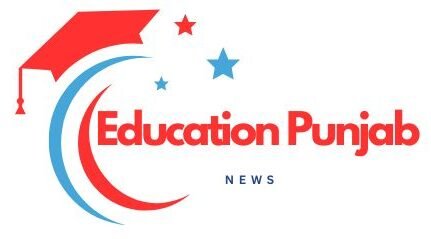
Photo by <a href="https://unsplash.com/@nathan_cima" rel="nofollow">Nathan Cima</a> on <a href="https://unsplash.com/?utm_source=hostinger&utm_medium=referral" rel="nofollow">Unsplash</a>

Introduction to Water Conservation in Schools
Water conservation is an essential aspect of environmental sustainability, and schools play a critical role in promoting these practices. In a school setting, saving water is not just about reducing utility bills, although that is a significant benefit. More importantly, it is about fostering a culture of responsibility and awareness among students. By implementing water-saving measures, schools can serve as a microcosm for broader societal changes, emphasizing the importance of sustainable living.
The role of schools in educating the next generation cannot be overstated. Young minds are highly impressionable, and the lessons they learn within the educational environment often shape their lifelong habits. Introducing water conservation practices within schools helps instill a sense of environmental stewardship in students. They learn the importance of preserving natural resources, understand the impact of their actions on the environment, and carry these lessons into their homes and future lives.
Adopting water-saving measures in schools also sets a positive example for students. When students see their school actively engaging in conservation efforts, it reinforces the message that every individual has a part to play in protecting our planet. Practical steps such as fixing leaking taps, installing water-efficient fixtures, and educating the school community about the importance of water conservation can have a profound impact.
Moreover, the financial aspect cannot be ignored. Schools often operate on tight budgets, and reducing water consumption can lead to considerable cost savings. These funds can then be redirected to other critical areas such as educational programs, facilities improvements, or extracurricular activities, thereby enhancing the overall learning environment.
In summary, water conservation in schools is crucial for both environmental and economic reasons. It educates students about sustainable practices, sets a positive example, and helps manage school budgets more effectively. By prioritizing water conservation, schools contribute to the broader goal of environmental sustainability, ensuring a better future for the next generation.
Conducting a Water Audit
Conducting a water audit is an essential first step in understanding current water usage and identifying potential areas for conservation in a school environment. This process involves a series of steps aimed at evaluating water consumption patterns and pinpointing inefficiencies.
First, begin by monitoring water meters to track overall water usage. Regularly recording meter readings can provide valuable data on consumption trends and help identify periods of high usage. Next, inspect all plumbing fixtures, including faucets, toilets, and urinals, for any signs of leaks or inefficiencies. Even minor leaks can result in substantial water waste over time, making this step crucial for water conservation efforts.
Additionally, check for any outdated or malfunctioning fixtures that may need replacement with more water-efficient models. Modern fixtures often come with water-saving technologies that can significantly reduce consumption. Alongside this, evaluate the irrigation systems used for school gardens and landscapes. Ensure that sprinklers are functioning correctly and consider implementing drip irrigation systems, which are more efficient and reduce water runoff.
Involving students and staff in the water audit process is equally important. By engaging the school community, you not only raise awareness about water conservation but also encourage active participation. Students can assist in monitoring water use, identifying leaks, and suggesting conservation measures. Staff members, particularly those in maintenance roles, play a critical part in implementing and sustaining these water-saving practices.
Finally, document all findings and develop a comprehensive report outlining areas where water can be conserved, along with actionable recommendations. Regularly reviewing and updating the water audit can help ensure ongoing improvements and foster a culture of sustainability within the school.
Upgrading to Water-Efficient Fixtures
One of the most effective strategies for conserving water in schools is upgrading to water-efficient fixtures. Replacing outdated, inefficient fixtures with modern alternatives can significantly reduce water consumption and utility costs, while also promoting environmental stewardship among students and staff.
Low-flow toilets are a prime example of water-saving technology. Traditional toilets use approximately 3.5 to 7 gallons per flush, whereas low-flow models use just 1.28 to 1.6 gallons. This substantial reduction in water usage can lead to considerable savings, especially in large schools with high daily usage.
Sensor-activated faucets are another effective upgrade. These fixtures automatically turn off when not in use, preventing unnecessary water wastage. They are particularly beneficial in high-traffic areas such as school restrooms, where taps are often left running. The initial investment in sensor-activated faucets can be offset by the long-term savings on water bills.
Efficient irrigation systems for school gardens and landscapes also play a crucial role in water conservation. Drip irrigation systems, for instance, deliver water directly to plant roots, minimizing evaporation and runoff. Smart irrigation controllers, which adjust watering schedules based on weather conditions and soil moisture levels, further enhance water efficiency.
While the upfront costs of these upgrades can be a consideration, the long-term savings and environmental benefits are substantial. Schools can explore various funding options to support these initiatives. Grants specifically aimed at promoting sustainability and water conservation are available from governmental and non-governmental organizations. Additionally, fundraising events and partnerships with local businesses can generate the necessary funds for these essential upgrades.
By investing in water-efficient fixtures, schools not only reduce their environmental impact but also teach students the importance of sustainable practices. These upgrades represent a practical and impactful step towards conserving one of our most vital resources—water.
Implementing Behavioral Changes
Behavioral change is a critical component in the drive to conserve water in schools. Encouraging both students and staff to adopt water-saving habits can significantly reduce water wastage and promote a culture of sustainability. Simple actions, such as turning off taps while washing hands, can make a substantial difference. Ensuring that taps are not left running unnecessarily is a fundamental step that can be easily incorporated into daily routines.
Another practical tip is to encourage the reporting of leaks. Leaks, no matter how small, can lead to considerable water loss over time. Schools should establish a straightforward reporting system, so that maintenance staff can address these issues promptly. This not only conserves water but also helps in maintaining the school’s infrastructure.
Promoting the use of refillable water bottles can further contribute to water conservation efforts. Refillable bottles reduce the demand for single-use plastic bottles, thereby minimizing waste and encouraging students to be mindful of their water consumption. Schools can facilitate this by installing water refill stations and educating students about their benefits.
Educational campaigns are instrumental in embedding water conservation behaviors. Posters placed in prominent areas, such as bathrooms and hallways, serve as constant reminders of the importance of saving water. Interactive activities, such as water conservation challenges and quizzes, can engage students in a fun and informative manner. These activities not only raise awareness but also foster a sense of responsibility among students.
Teachers and school staff play a vital role in this endeavor. By modeling water-saving behaviors and integrating water conservation topics into the curriculum, they can inspire students to follow suit. Additionally, organizing workshops and assemblies focused on water conservation can provide valuable knowledge and motivate the entire school community to adopt sustainable practices.
Incorporating Water Conservation into the Curriculum
Integrating water conservation into the school curriculum offers a multifaceted approach to education, emphasizing environmental stewardship alongside academic learning. By weaving water conservation lessons into various subjects, educators can foster a deeper understanding of the importance of sustainable water use among students.
One effective method is to incorporate water conservation themes into science classes. For instance, students can engage in experiments that demonstrate the water cycle, water filtration processes, and the impacts of pollution on water sources. Such hands-on learning experiences not only enhance comprehension but also instill a sense of responsibility towards water resources. Field trips to local water treatment plants provide a tangible connection between classroom learning and real-world applications, allowing students to witness the complexities of water management firsthand.
In geography and social studies, lessons can explore the global distribution of water resources, the challenges faced by arid regions, and the socio-economic implications of water scarcity. This helps students appreciate the global context of water conservation and recognize the interdependence between communities and their water supplies.
Mathematics lessons can also integrate water conservation by using data analysis and statistics to track water usage, calculate water footprints, and model conservation scenarios. This not only applies mathematical concepts to practical situations but also encourages critical thinking about personal and collective water usage.
Language arts classes can assign projects or essays focused on water conservation topics, encouraging students to research, articulate, and advocate for sustainable practices. Creative assignments, such as writing persuasive letters to local officials or creating informational brochures, can further enhance students’ communication skills while promoting environmental awareness.
Extracurricular activities, such as environmental clubs, can spearhead school-wide water conservation initiatives. Projects might include creating rain gardens, organizing water-saving campaigns, or participating in community clean-up events. These activities provide leadership opportunities for students and reinforce the importance of proactive environmental stewardship.
By embedding water conservation into the curriculum across various subjects and activities, schools can cultivate a generation of informed and responsible individuals committed to preserving our vital water resources.
Creating a Water Conservation Task Force
Establishing a dedicated task force is a crucial step toward successful water conservation efforts in schools. This task force should be a collaborative group comprising teachers, students, and maintenance staff. Each member brings a unique perspective and set of skills, vital for comprehensive water-saving strategies.
Teachers play a pivotal role in the task force, leveraging their influence to educate and motivate students about the importance of water conservation. They can integrate water-saving principles into the curriculum, organize awareness campaigns, and oversee student-led projects. Their primary responsibility is to ensure that educational activities align with the overall conservation goals.
Students are the heartbeat of any water conservation task force. Their enthusiasm, creativity, and willingness to adopt new habits can drive significant change. Students can participate in various activities, from conducting water audits to spearheading campaigns that promote water-saving practices among their peers. By taking on these responsibilities, students not only contribute to conservation efforts but also develop leadership skills and environmental stewardship.
Maintenance staff are essential members of the task force, providing technical expertise and practical solutions for reducing water usage. They are responsible for identifying and fixing leaks, optimizing irrigation systems, and ensuring that water-efficient fixtures are installed and maintained. Their hands-on involvement is critical for implementing and sustaining water-saving measures within the school infrastructure.
Regular meetings are fundamental to the task force’s success. These gatherings provide an opportunity to set achievable goals, discuss progress, and refine strategies. Goals should be specific, measurable, attainable, relevant, and time-bound (SMART) to ensure clarity and accountability. Tracking progress through regular updates and reports helps maintain momentum and allows the task force to celebrate successes and address challenges promptly.
By fostering a collaborative environment and clearly defining roles and responsibilities, a water conservation task force can effectively oversee and enhance water-saving initiatives within the school. This structured approach ensures that everyone is engaged and working towards a common goal: conserving water and promoting sustainable practices.
Engaging the wider community is an essential component of any successful water conservation initiative in schools. By reaching out to local stakeholders and fostering collaborative efforts, schools can amplify their impact and gain valuable support and resources. One effective strategy is to host workshops on water conservation, which can educate students, teachers, and community members about best practices for reducing water usage. These workshops can feature guest speakers from local environmental organizations, providing expert insights and fostering a sense of collective responsibility.
Collaboration with local environmental organizations also offers schools the opportunity to participate in broader conservation efforts. These partnerships can lead to shared projects, such as rainwater harvesting systems or community gardens, which not only conserve water but also serve as educational tools. Additionally, partnering with these organizations can provide access to grants and other funding opportunities aimed at promoting sustainable practices.
Participating in community events is another effective way to engage the public in water conservation efforts. Schools can set up informational booths at local fairs or festivals, where they can distribute educational materials and demonstrate water-saving techniques. Such visibility helps to raise awareness and encourages community members to adopt similar practices in their homes and businesses. Furthermore, these events provide a platform for recognizing and celebrating the efforts of students and staff, fostering a sense of pride and ownership in the conservation program.
The benefits of community engagement extend beyond immediate resource and knowledge sharing. By involving the community, schools can build a network of committed individuals and organizations dedicated to sustainable water use. This network can offer ongoing support, from volunteering time to sharing expertise and resources. Moreover, a community that is actively engaged in water conservation is more likely to advocate for and support school initiatives, creating a positive feedback loop that enhances the overall effectiveness of the program.
Monitoring and Sustaining Water Conservation Efforts
Effective water conservation in schools demands both initial implementation and ongoing maintenance. Regular monitoring of water usage is crucial in sustaining these efforts over time. By consistently tracking water consumption, schools can identify patterns, detect leaks early, and recognize areas where further conservation measures may be required. Utilizing water meters and automated monitoring systems can provide real-time data, ensuring that any anomalies are promptly addressed.
Periodic reviews of progress are equally important. Schools should establish a schedule for evaluating their water conservation initiatives, which might include monthly or quarterly assessments. This allows for the measurement of success against established benchmarks and enables the identification of areas needing improvement. During these reviews, it is essential to involve a diverse group of stakeholders, including facility managers, teachers, and students, to gather comprehensive feedback and foster a sense of collective responsibility.
Adjustments to conservation strategies should be data-driven and adaptable. For instance, if a particular measure is not yielding the desired results, schools should not hesitate to refine their approach. This could involve upgrading to more efficient fixtures, implementing new educational programs, or increasing community engagement. Flexibility and responsiveness are key to the long-term success of water conservation efforts.
Recognizing and celebrating successes can significantly bolster motivation within the school community. Establishing recognition programs or water conservation awards can highlight individual or collective achievements. Such initiatives not only incentivize continued participation but also raise awareness about the importance of water conservation. Schools might consider hosting annual award ceremonies or featuring success stories in school newsletters and social media platforms, thus fostering a culture of sustainability.
Ultimately, the sustained success of water conservation efforts in schools hinges on diligent monitoring, regular reviews, adaptive strategies, and a motivated community. By embedding these practices into the school’s routine, the institution can make a lasting impact on water conservation and set a commendable example for future generations.





